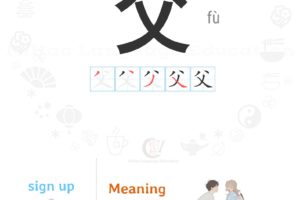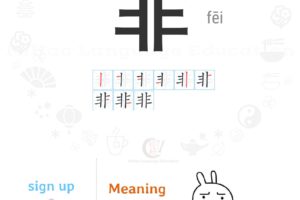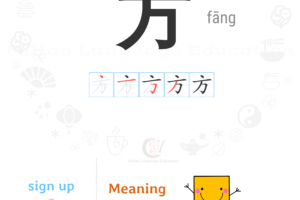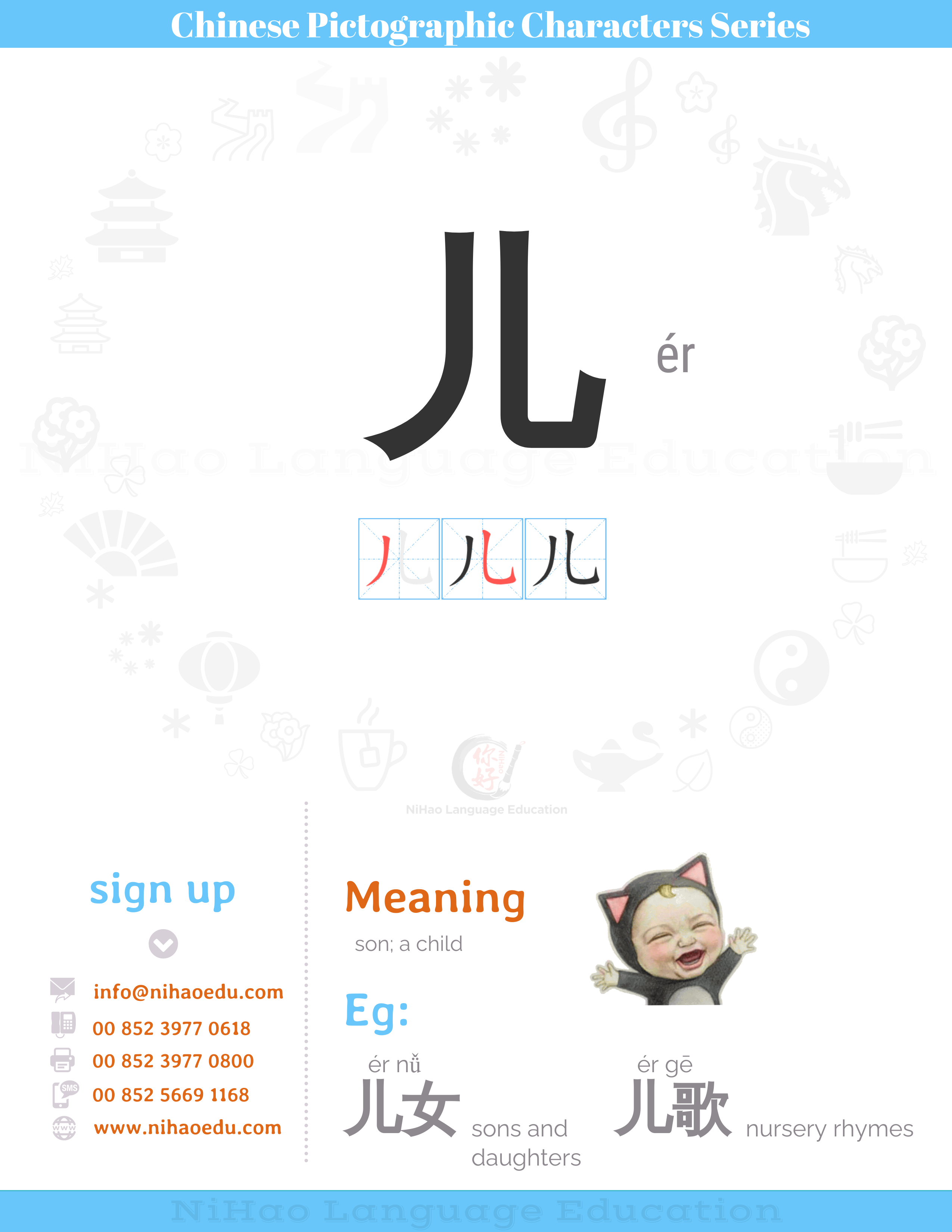Chinese Radicals Series儿
- Posted by NIHAO
- Categories Chinese Radicals Series
- Date 2020-10-29
- Comments 0 comment
The word 儿 is the simplified form of the conventional character 兒. The pictogram of the conventional character shows an infant with a big head and a small body. The opening at the top of the pictogram represents the soft spot found in the head of the infants. The simplified form retains just the body without the head.
The word 儿 refers to a child of either sex and is used in combination with other words to form phrases such as 儿歌 (ér gē, ’nursery rhymes’),儿童 (ér tóng, ‘children’), 儿女 (ér nǚ, ‘sons and daughters’).
儿 can be also used as a component in word-formation. Words containing this component generally refers to humans and their actions, for example, 元 (yuán, ‘chief’), 兄 (xiōng, ’elder brother’), 允 (yǔn, ’allow’) and 先 (xiān, ‘first’).
In Chinese, 儿子 (ér zi) means ‘son’. In the traditional agriculture society of China, sons were preferred to daughters because they could prolong the family line, as well as provide much-needed labor on farms.
Idioms and phrases
儿科医生 ér kē yī shēng
Paediatrician
儿时 ér shí
Childhood days
儿孙 ér sūn
Children and grandchildren
儿戏 ér xì
Child’s play; trifle
女儿 nǚ ér
Daughters
You may also like

Chinese Radicals Series父fù

Chinese Radicals Series非fēi

